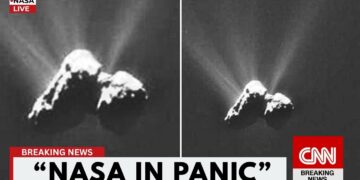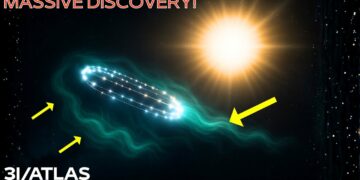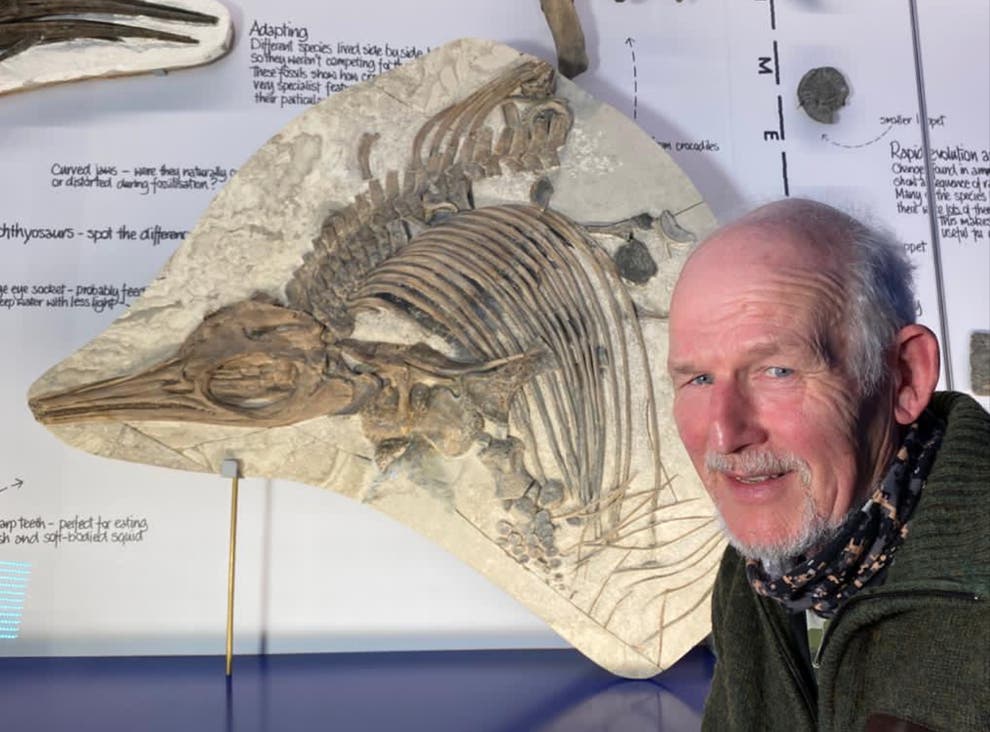On September 12, 2025, astronomers detected a colossal interstellar object, 100 times larger and brighter than 3I/Atlas, also heading toward the sun. Spotted using the Solar Wind Anisotropies (SWAN) instrument aboard the SOHO spacecraft, it was captured in a stunning image two days later by Australian comet expert Michael Matiaso. Its tail, spanning 2.5 degrees—roughly five full moons wide—dwarfs the thin plume of 3I/Atlas, resembling a warship beside a drone. Officially named C/2025 R2 (Swan) by the International Astronomical Union, after its initial designation Swan 25B, this object has sparked intense debate, arriving just as 3I/Atlas approaches the sun.
A Cosmic Convergence
The timing of Swan R2’s arrival alongside 3I/Atlas is striking. Both will reach perihelion in October 2025, with Swan passing 150 million km from the sun and 3I/Atlas at 203 million km—a mere 50 million km apart, a razor-thin gap on a cosmic scale. As their velocities shift, this distance is shrinking. Most ominously, both will vanish behind the sun’s glare simultaneously, untrackable by Earth’s telescopes, leaving scientists blind to their interactions.
Initially, Harvard astrophysicist Avi Loeb speculated Swan might be a fragment of 3I/Atlas or a scout from a larger craft. However, collaborator Peter Ves confirmed they originate from unrelated directions: Swan from Aquarius, and 3I/Atlas from Sagittarius near the Milky Way’s core. This convergence of two interstellar objects raises questions: is this coincidence, a coordinated system, or something else entirely?
Unnatural Characteristics
Spectroscopic scans of 3I/Atlas reveal a pure nickel body, lacking iron—a composition typical of advanced industry, not nature. Its 10-gigawatt nuclear core, equivalent to 50 Chernobyl reactors, powers a tail that behaves like engine thrust, emitting a tightly collimated stream of carbon dioxide at a steady velocity. As it nears the sun, its exhaust shifts from red to green, a phenomenon Loeb calls “thrust mix modulation,” suggesting deliberate trajectory adjustments.
Swan R2, however, is even more extraordinary. It features a silver plasma shield around a nickel-cobalt armored core, dynamically bending solar wind and deflecting radiation. Its tail, 100 times larger than 3I/Atlas’s, flares brighter and shifts to white-green at perihelion, with tiny thrust pulses indicating a precision plasma drive. Spectral analysis reveals a mix of nickel, cobalt, iron, carbon dioxide, and carbon monoxide—impossible without a directed plasma engine. Most shockingly, Swan’s core outputs over 10,000 gigawatts per second, a power level Loeb compares to colliding black holes, contained within a single machine. If 3I/Atlas is a scout, Swan R2 is a fortress.
A Returning Visitor
NASA and JPL calculations reveal Swan R2 follows a 22,554-year orbit, last visiting our sun at the end of the last Ice Age, when humanity began building monolithic structures and star maps. This cycle, predating civilization, suggests Swan is no one-time visitor but a returning traveler. Its perihelion in October 2025 aligns with 3I/Atlas’s, prompting Loeb to question whether this is a system—an automated machine on a routine patrol.
Loeb theorizes Swan R2 could be part of a scheduled maintenance cycle, collecting solar plasma, adjusting hidden sensor networks, or downloading data from stations in the asteroid belt, polar ice, or planetary crusts. The sun might serve as a power source or navigation beacon, with 22,000 years allowing new data to accumulate. Alternatively, Swan could be here to recover 3I/Atlas’s data, destroy it, or even compete for a resource like the sun’s energy, magnetic fields, or gravitational potential.
Ancient Echoes
Archaeologist Graham Hancock suggests Swan’s last passage 22,000 years ago coincided with humanity’s shift to agriculture and monumental architecture, like the Great Pyramid and Stonehenge, whose shafts align with Orion. These structures might encode warnings of such celestial visitors, their five-moon-wide tails blazing across ancient skies. This could explain the precision of ancient star maps and calendars tracking precession, as early civilizations marked these cycles.
A Response to Humanity?
Loeb notes three interstellar anomalies in a decade: ‘Oumuamua in 2017, 3I/Atlas, and now Swan R2. Since the 1970s, humanity’s radio, TV, radar, Arecibo message, and Voyager golden records have broadcast our presence, reaching dozens of star systems. Loeb suggests this “bubble of noise” may have triggered a response: ‘Oumuamua as a silent scout, 3I/Atlas as a data-collecting probe, and Swan R2 as a commanding fortress. This sequence could represent an audit of a civilization now shouting into the cosmos.
A Troubling Silence
Despite the magnitude of these discoveries, major space agencies like NASA and ESA remain largely silent, issuing only cautious statements. This lack of public discourse is concerning, as Swan R2 and 3I/Atlas challenge our understanding of comets, technology, and our place in the universe. Whether natural or artificial, these objects demand new frameworks. Ignoring them risks missing a transformative moment.
As October 2025 approaches, these objects will disappear behind the sun, leaving humanity to await their reemergence. Will they interact, collide, or alter course? The cosmos is speaking, and we must listen. Share your theories: is this routine maintenance, an ancient surveillance network, or a response to our signals?
























